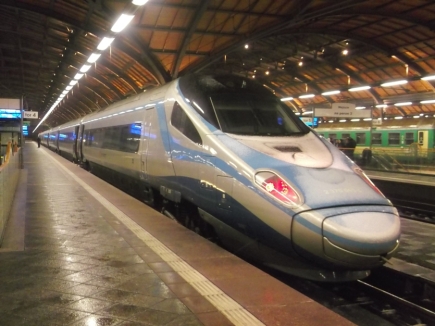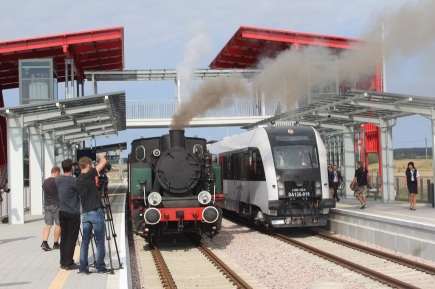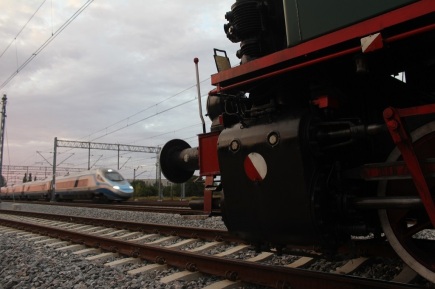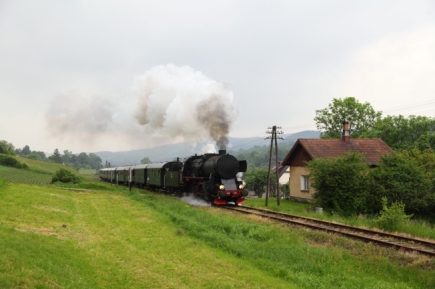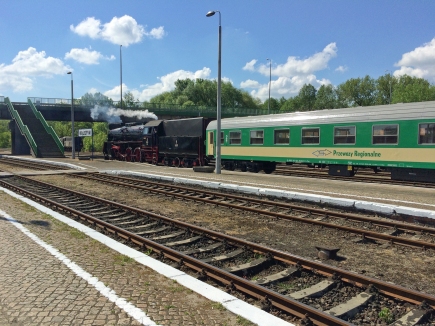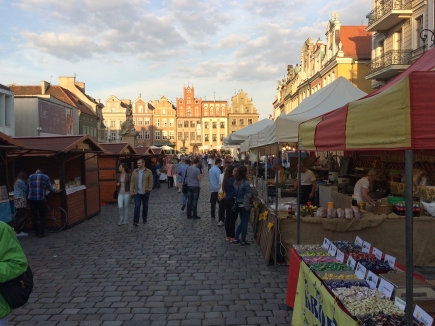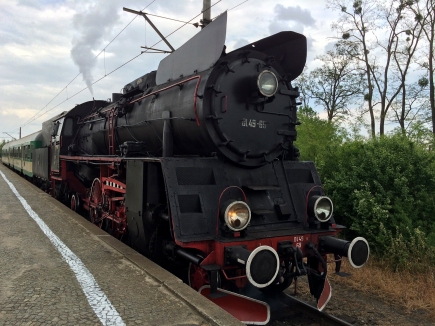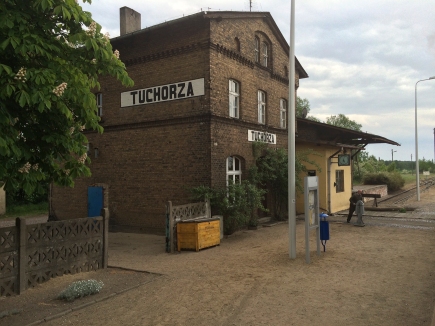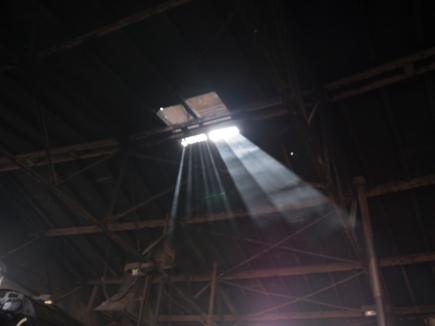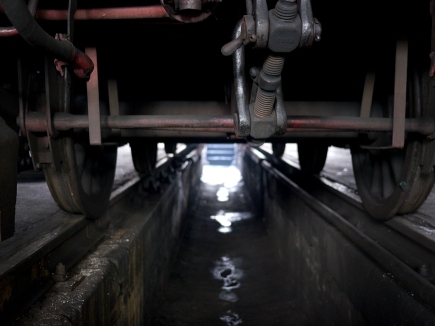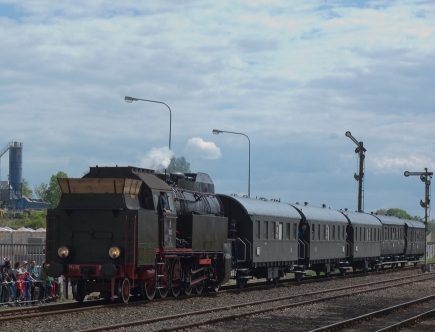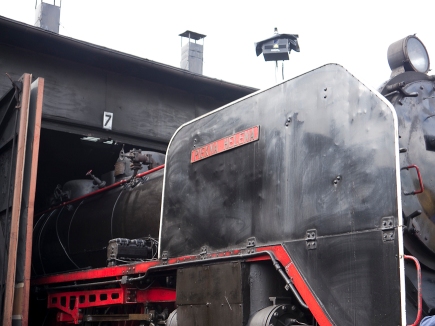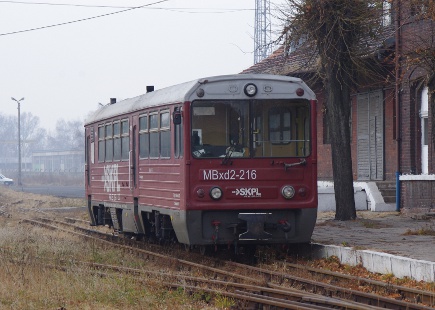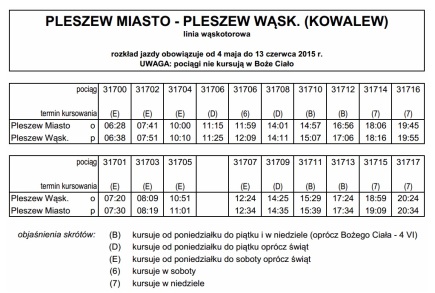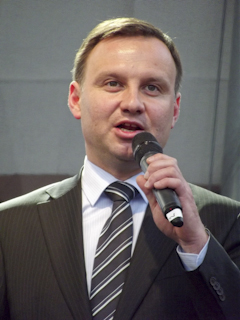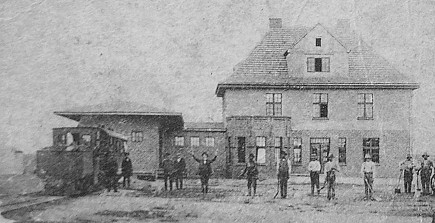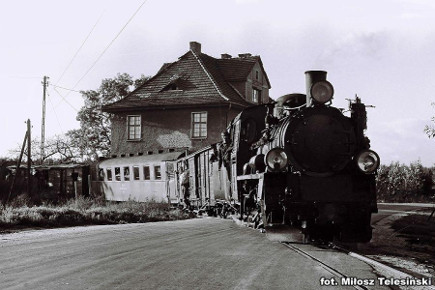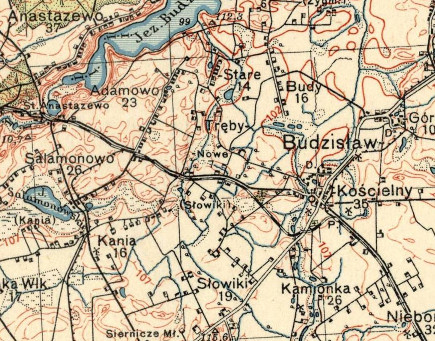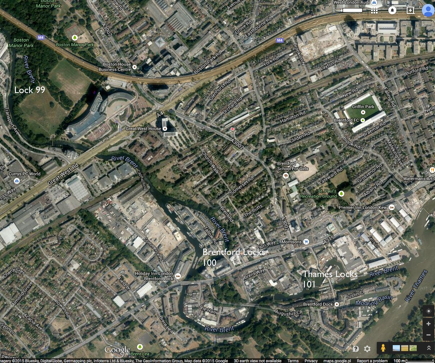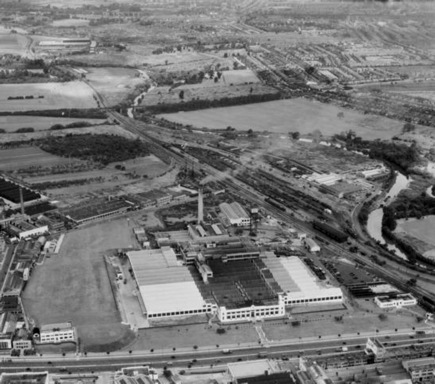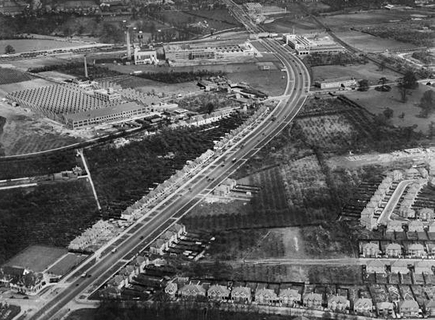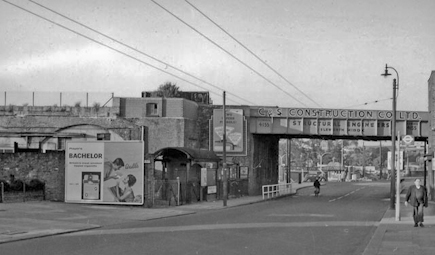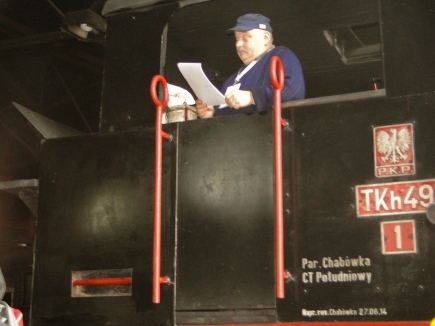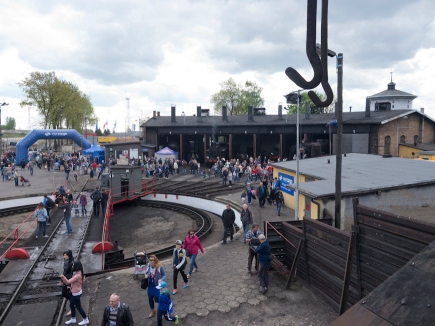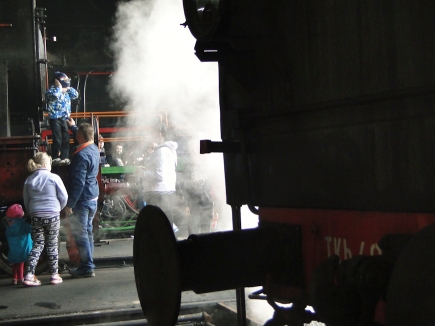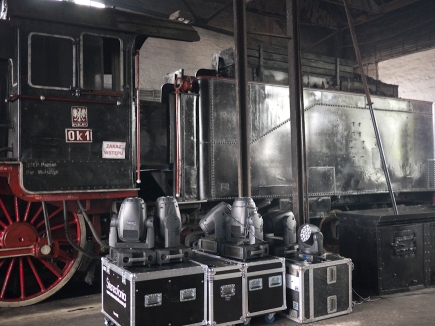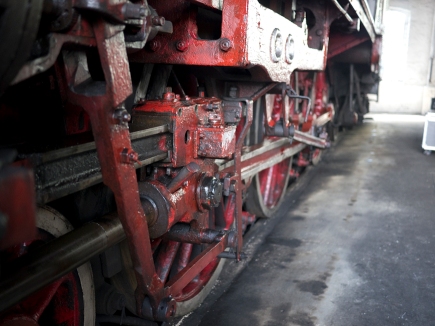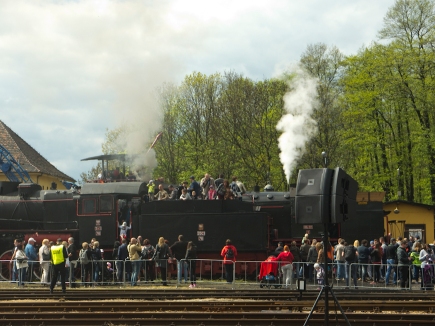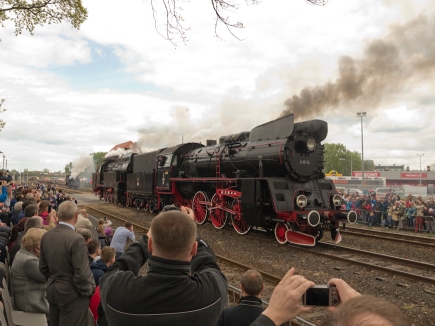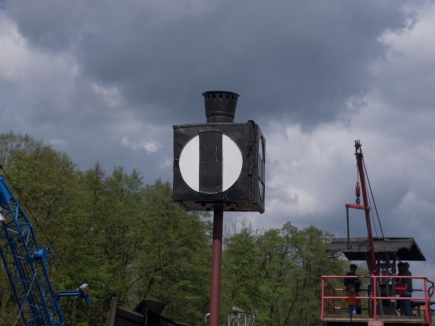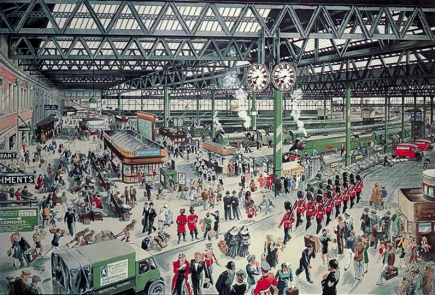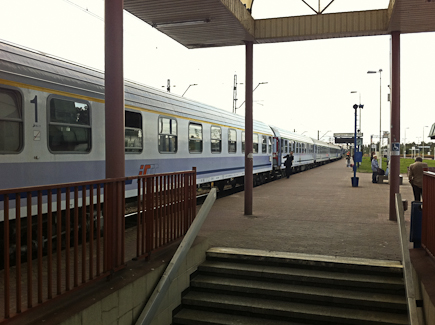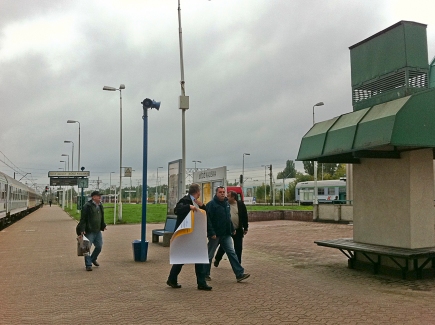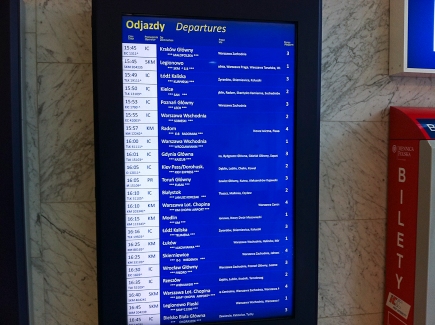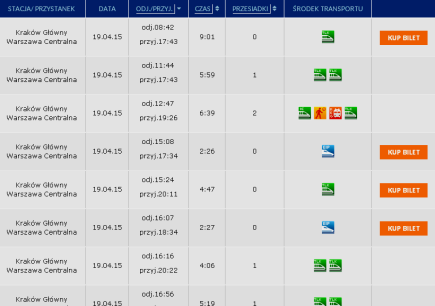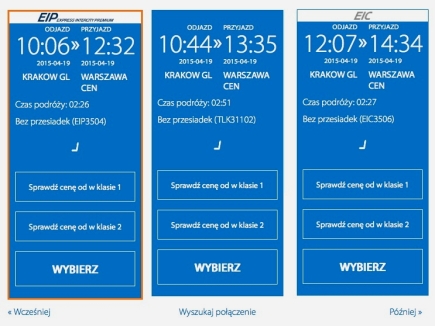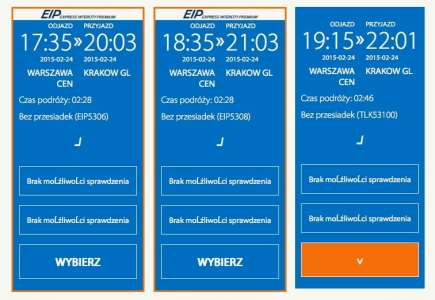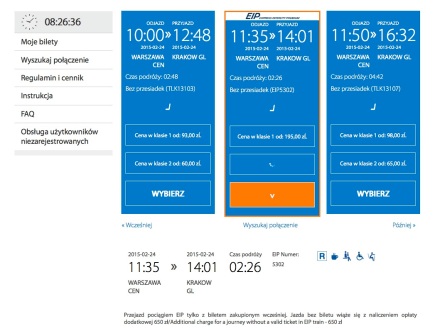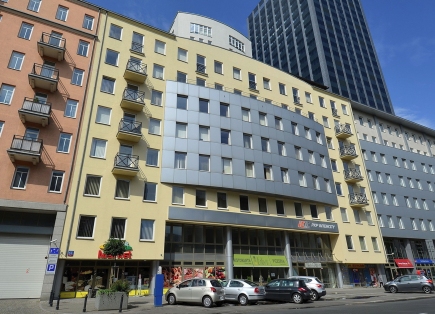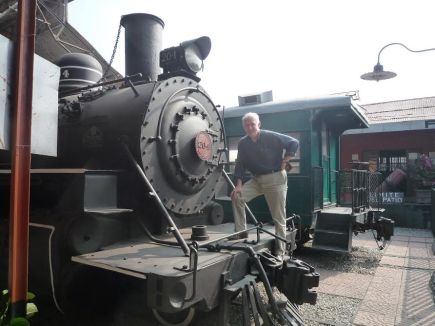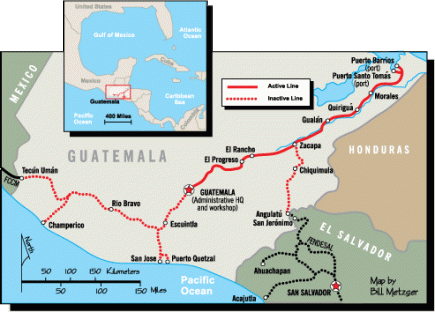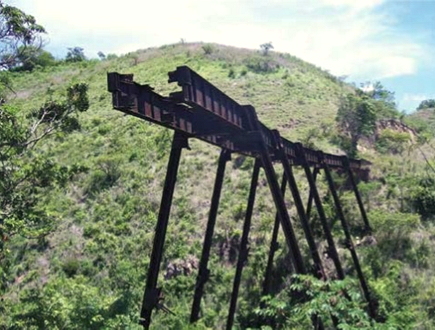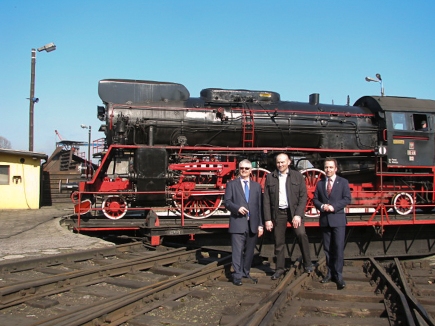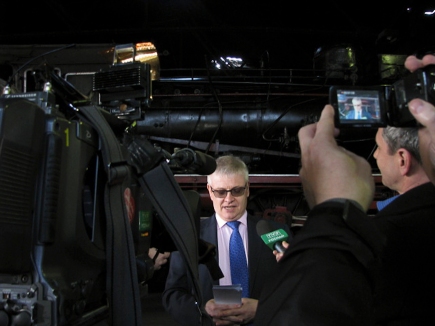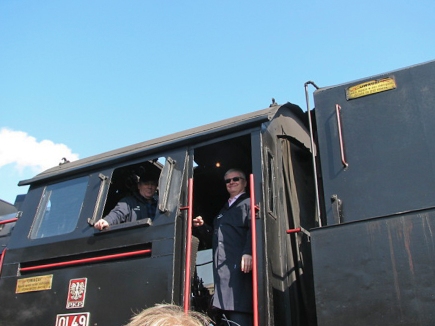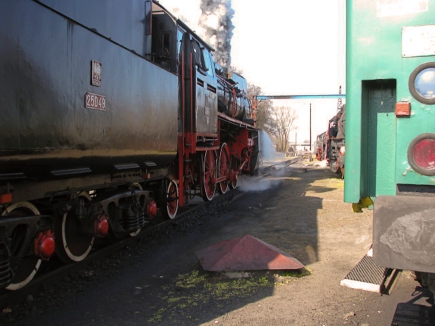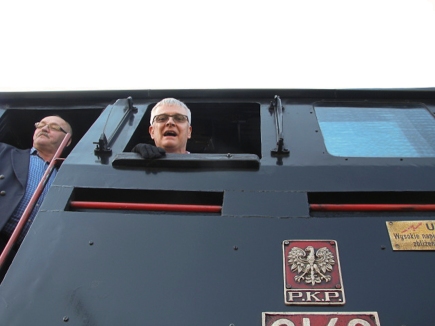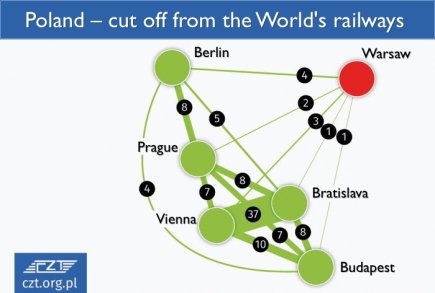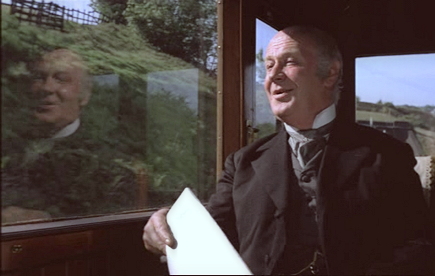
The Railway Children’s ‘The Old Gentleman’. Frame grab courtesy Studio Canal.
Railway photographers lead dangerous lives. All too often they are arrested, their cameras taken away from them and their photos deleted. We asked Dyspozytor how he deals with jobsworth officials interfering with his railway photography in Poland. We have no hesitation in recommending either his regretful approach, ‘I’m awfully sorry. I’m from England. I didn’t know your railway was a strategic installation of military importance.’ or his more apologetic, ‘Thank you for pointing out that I was trespassing. I am very sorry. Now let that be the end of the matter’. However, the last technique he describes here seems to us to be downright dangerous and should not be attempted by anyone who does not at least possess a black belt in the martial arts.
Rule 1. Remain calm and collected at all times.
Let the ‘Old Gentleman’, so brilliantly portrayed by William Mervyn in the 1970 film adaptation of The Railway Children, be your role model.
My first brush against Polish officialdom occurred in 1965, or was it perhaps a year or two earlier? I was a schoolboy and had gone to Stepnica, a tiny port on the Szczecin Lagoon served by a couple of sidings on a branch of the then massive metre gauge railway network centred on Gryfice. I took a couple of shots of an engine at the head of a train at the station.
There are few signs that the port and town of Stepnica were once served by a railway. Satellite photo courtesy of Google Maps.
The station master caught me and delivered a lecture that the railway was a strategic instillation of military significance and that he should call the police. I countered that in the UK we did not regard narrow gauge railways as having any significance at all other than as tourist attractions and apologised profusely.
I was allowed to keep my camera and my film. I used a similar tactic and obtained the same outcome when challenged after photographing a tram depot near Warszawa Wschodnia station in the 1970s.
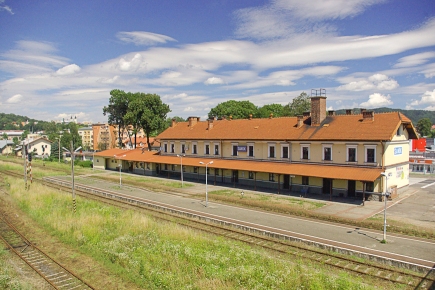
Sanok station July 2010. Dyspozytor had strayed off the platform on the left. Photo (GRAD). Licence CC BY-SA 3.0.
But that was then – when Poland was in thrall to the Soviet empire, and paranoia reigned on both sides of the Iron Curtain. Today Polish law has changed. You are allowed to take photographs of trains and railways, but not trespass on railway property.
In 1990, I was with Michael Dembinski (author of W-wa Jeziorki blog) waiting at a level crossing to photograph a Tkt48 pulling a train consisting of a couple of double decker coaches. The level crossing attendant ranted at us that photography of railway lines was prohibited. Michael retorted in his best Jeremy Clarkson manner that the days of communism were over. Which leads me neatly to:
Rule 2. Be firm and stick to your guns.
A few years ago, I was wandering around taking photographs of Sanok station, which was – and still is – served by only a handful of trains a day. I stepped off the platform to get the whole of the station in the frame, shot a set of photographs and found myself facing a member of the Straź Ochrony Kolei (Railway Police).
He told me that I was breaking the law, that he would call the police and would face all sorts of unspecified punishments. I told him that there was no law against taking photographs of the railway. He told me that I was trespassing on railway land and that he would call the police and that I would face… . I thanked him for pointing this out and for having told me off, and told him that I accepted his rebuke and told him that that should be the end of the matter.
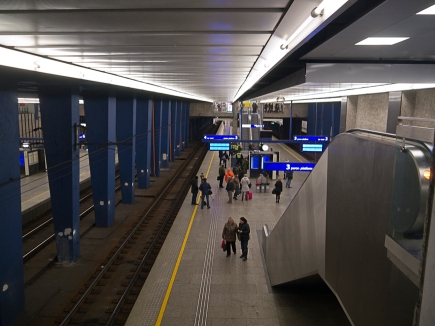
Warszawa 06:25 on December 14 2014 . Shortly after taking this photo in available light (no flash) Dyspoztytor was challenged by a uniformed member of the SOK (Railway Police). Photo BTWT.
We repeated this scene some three or four times. I then pointed out that he had done his job and I needed to get going. I suspect that he had hoped for a bribe. With none forthcoming, he left. The next time I was challenged by a member of the Straz Kolejowy, I did not let him off so lightly, which brings me round to my last rule:
Rule No. 3. The best form of defence is attack!
On the morning of December 14 2014, shortly before travelling on the first ever public Pendolino service from Warsaw to Krakow, I was accosted by a member of the SOK and asked whether I had a permit to take photographs. All around me TV crews were setting up, people were snapping away as if there was no tomorrow, yet this SOKista had the nerve to pick on an old gentleman barely supporting himself on a walking stick – me!
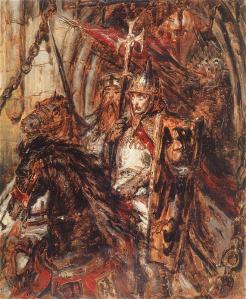
Henry the Pious before his defeat and beheading at the Battle of Legnica in 1241. From a painting by Jan Matejko.
I saw red. My blood pressure rose past all safe limits. I was trying to change the course of history and fighting the Battle of Legnica all over again, defending civilisation against the hordes from the East. What! I spluttered. Today, everybody in Poland should be rejoicing that at last Polish Railways have taken a cautious step forward into the future, and YOU are behaving as if we were still living under communism!
I had reached the most dangerous moment, the man’s temper was rising. The list of remedies available to members of SOK reads like something out of Fifty Shades of Grey: physical force, weighted baton, handcuffs, tear gas grenade, police dog, Walther P99 and Taser. It was time to go in for the kill, Tell me Sir, when did you last go to confession?
Defeated by an old gentleman with a walking stick, the SOKista beat a hasty retreat.
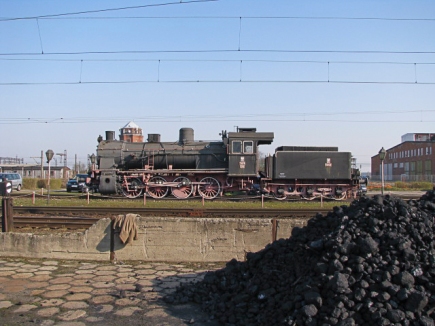
Tp3-3, former Prussian Railways G8 class, built Hanomag 2013, active PKP service 1945-1970, displayed as a ‘technical monument’ at Zbąszynek from 1988. Note pile of coal in foreground and shadow cast by the sun. Photo BTWT.
My last run in with the SOK occurred just 5 days ago on 17 March at Zbąszynek. I was with a friend, we were returning from Wolsztyn, where we had been guests at a lunch given by the Mayor of Wolsztyn in honour of the British Ambassador on the occasion of his visit to the Steam Locomotive Depot.
We were both smartly dressed and talking – quite loudly I suspect – in English. It was 15:15, the sun was shining brightly from the South West and we both walked off the end of the platform to get a good view of the Ex Prussian Railway G8 0-8-0 plinthed just off the neighbouring platform.
After I had taken my photographs, we were approached by a couple of SOKisci. It appeared one of them objected that we were wandering too close to a pile of coal. The last part of our conversation went something like this.
Me Zbąszynek should be celebrating its railway heritage not harassing tourists!
SOKista Why are you raising your voice?
Me Because I object to being told off for taking a photograph of a unique Prussian Railways locomotive.
SOKista You can take your photo from the other platform. I am just telling you that you should not be wandering around in the vicinity of the heap of coal.
Me So you you think that I am planning to take the coal away in my jacket pocket? I cannot take a photograph against the sun. I object most strongly to you lecturing me.
SOKista I am not lecturing you…
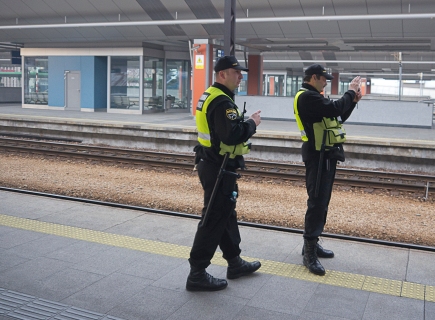
SOKisci are human too! Taking photos of the first ever public Pendolino working to Krakow in 14 December 2014. Photo BTWT.
[Here comes the critical moment, the SOKista has as good as admitted defeat, and has delivered his last two lines with a broad grin on his face. Time to let him off the hook, and to show that I understand that he has to work in a wider environment with regulations and bosses.]
Me That as maybe. But I am lecturing YOU. Please tell your boss that, if Zabąszynek is to be a proper custodian of a unique locomotive of world-class importance, photographers should be welcomed not harassed.
And that was the end of the matter. When it became clear that our EIC train from Berlin to Warsaw was lost somewhere in Germany, and that it would be prudent to take the next KW stopping train to Poznan, the SOKisci, seeing my walking stick, guided us politely over the barrow crossing to the platform where the stopping train was waiting. Perhaps things are getting better on PKP after all?
More:
